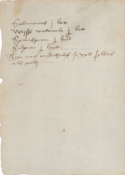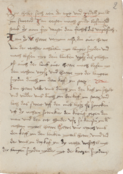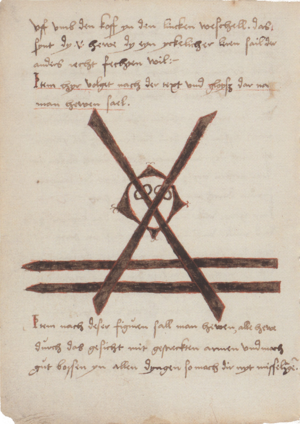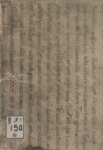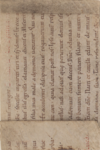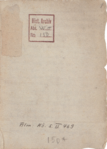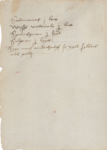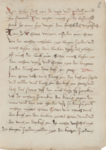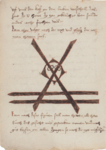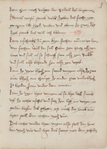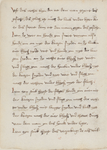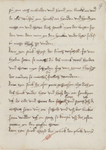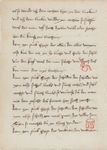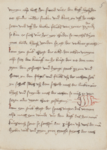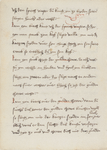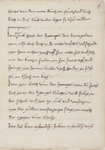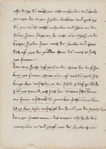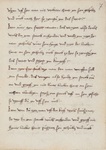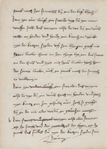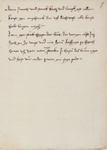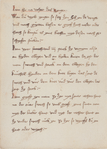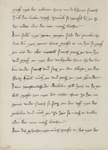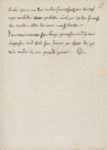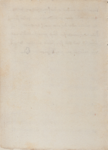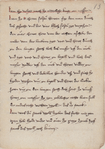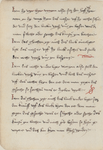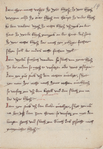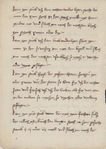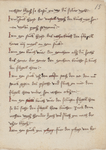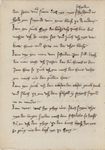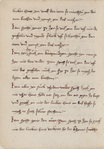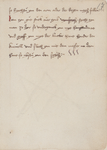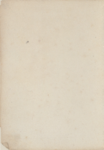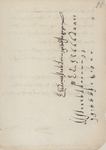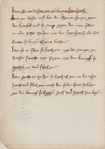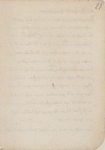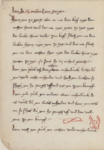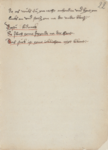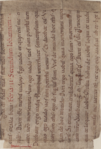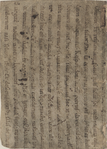|
|
You are not currently logged in. Are you accessing the unsecure (http) portal? Click here to switch to the secure portal. |
Difference between revisions of "Kölner Fechtregeln (MS Best.7020 (W*)150)"
| Line 20: | Line 20: | ||
| Date = ca. [[year::1500]] | | Date = ca. [[year::1500]] | ||
| Place of origin = | | Place of origin = | ||
| − | | Language(s) = [[language::Early New High German]] <br/>([[wikipedia:Ripuarian language|Ripuarian]]) | + | | Language(s) = [[language::Early New High German]]<br/>([[wikipedia:Ripuarian language|Ripuarian]]) |
| Scribe(s) = | | Scribe(s) = | ||
| Author(s) = Unknown | | Author(s) = Unknown | ||
| Line 45: | Line 45: | ||
| below = | | below = | ||
}} | }} | ||
| − | '''''Fechtregeln''''' ("Fencing Rules"; MS Bestand 7020 (W*)150) is an anonymous [[nationality::German]] [[fencing manual]] created around the turn of the 16th century.<ref name="Handschriftencensus">Matthias Johannes Bauer. "[http://www.handschriftencensus.de/13145 Köln, Hist. Archiv der Stadt, Best. 7020 (W*) 150]". ''Handschriftencensus. Eine Bestandsaufnahme der handschriftlichen Überlieferung deutschsprachiger Texte des Mittelalters.'' October, 2009. Retrieved 7 July 2012.</ref> It | + | '''''Fechtregeln''''' ("Fencing Rules"; MS Bestand 7020 (W*)150) is an anonymous [[nationality::German]] [[fencing manual]] created around the turn of the 16th century.<ref name="Handschriftencensus">Matthias Johannes Bauer. "[http://www.handschriftencensus.de/13145 Köln, Hist. Archiv der Stadt, Best. 7020 (W*) 150]". ''Handschriftencensus. Eine Bestandsaufnahme der handschriftlichen Überlieferung deutschsprachiger Texte des Mittelalters.'' October, 2009. Retrieved 7 July 2012.</ref> It currently rests in the holdings of the [[Historisches Archiv der Stadt Köln]] in Cologne, Germany; it was housed in the wing of the Archive that collapsed on 3 March 2009,<ref>Newspaper article [http://www.noz.de/deutschland-welt/vermischtes/artikel/211493/verschollen-und-doch-gerettet-osnabrucker-historiker-reproduziert-eine-beim-einsturz-des-kolner-stadtarchivs-verloren-gegangene- Neue Osnabrücker Zeitung 01.03.2010]</ref> but it was recovered and seems to have been unharmed. |
| + | |||
| + | Fechtregeln, also sometimes called the "Kölner Fechtbuch" (Fencing Manual of Cologne), contains a few verses resembling [[Johannes Liechtenauer]]'s [[Recital]], but it has few other obvious parallels to the teachings of the high master.<ref name="Handschriftencensus"/> However, as [[James Wallhausen]] points out, it does bear a certain resemblance to the syllabus of the [[Marxbrüder]] fencing guild as described by [[Hans Sachs]].<ref>[[James Wallhausen]]. [http://paleo.eskirmology.co.uk/best-7020-fechtbuch/ "The Fight-Lore of the Long Sword From the Kölner Fechtbuch (MS Best.7020)".] ''Paleoeskirmology Historical Combat Systems''. Retrieved 24 June 2012.</ref> | ||
== Provenance == | == Provenance == | ||
| Line 53: | Line 55: | ||
* Created in ca. 1500<ref name="Handschriftencensus"/> by an anonymous scribe; the dialect of German used in the text ([[wikipedia:Ripuarian language|Ripuarian]]) suggests an origin in Cologne, Germany.<ref>''Handschriftencensus Rheinland. Erfassung mittelalterlicher Handschriften im rheinischen Landesteil von Nordrhein-Westfalen mit einem Inventar''. Ed. Günter Gattermann. 1993. Vol. 2, pp. 1319f. (Nr. 2488)</ref> | * Created in ca. 1500<ref name="Handschriftencensus"/> by an anonymous scribe; the dialect of German used in the text ([[wikipedia:Ripuarian language|Ripuarian]]) suggests an origin in Cologne, Germany.<ref>''Handschriftencensus Rheinland. Erfassung mittelalterlicher Handschriften im rheinischen Landesteil von Nordrhein-Westfalen mit einem Inventar''. Ed. Günter Gattermann. 1993. Vol. 2, pp. 1319f. (Nr. 2488)</ref> | ||
* before 1824 – acquired by scholar and collector Ferdinand Franz Wallraf (donated upon his death, 1824). | * before 1824 – acquired by scholar and collector Ferdinand Franz Wallraf (donated upon his death, 1824). | ||
| − | * 1824- | + | * 1824-present – held by the [[Historisches Archiv der Stadt Köln]]. |
| − | |||
== Contents == | == Contents == | ||
Revision as of 17:45, 12 February 2019
| Fechtregeln | |||||
|---|---|---|---|---|---|
| MS Best.7020 (W*)150, Historisches Archiv Cologne, Germany | |||||
| |||||
| |||||
| Type | |||||
| Date | ca. 1500 | ||||
| Language(s) | Early New High German (Ripuarian) | ||||
| Author(s) | Unknown | ||||
| Size | 22 folia | ||||
| Format | Double-sided | ||||
| External data | Handschriftencensus | ||||
| Treatise scans | Microfilm scans | ||||
| Other translations | Traduction française | ||||
Fechtregeln ("Fencing Rules"; MS Bestand 7020 (W*)150) is an anonymous German fencing manual created around the turn of the 16th century.[1] It currently rests in the holdings of the Historisches Archiv der Stadt Köln in Cologne, Germany; it was housed in the wing of the Archive that collapsed on 3 March 2009,[2] but it was recovered and seems to have been unharmed.
Fechtregeln, also sometimes called the "Kölner Fechtbuch" (Fencing Manual of Cologne), contains a few verses resembling Johannes Liechtenauer's Recital, but it has few other obvious parallels to the teachings of the high master.[1] However, as James Wallhausen points out, it does bear a certain resemblance to the syllabus of the Marxbrüder fencing guild as described by Hans Sachs.[3]
Contents
Provenance
The known provenance of the MS Bestand 7020 (W*)150 is:
- Created in ca. 1500[1] by an anonymous scribe; the dialect of German used in the text (Ripuarian) suggests an origin in Cologne, Germany.[4]
- before 1824 – acquired by scholar and collector Ferdinand Franz Wallraf (donated upon his death, 1824).
- 1824-present – held by the Historisches Archiv der Stadt Köln.
Contents
| 1r | Blank | ||||||||||||||||||||||||||||||||||||||||||||||||||||||||||||||||||||||||||||||||||||||||||||||||||||||||||||||||||
|---|---|---|---|---|---|---|---|---|---|---|---|---|---|---|---|---|---|---|---|---|---|---|---|---|---|---|---|---|---|---|---|---|---|---|---|---|---|---|---|---|---|---|---|---|---|---|---|---|---|---|---|---|---|---|---|---|---|---|---|---|---|---|---|---|---|---|---|---|---|---|---|---|---|---|---|---|---|---|---|---|---|---|---|---|---|---|---|---|---|---|---|---|---|---|---|---|---|---|---|---|---|---|---|---|---|---|---|---|---|---|---|---|---|---|---|
| 1v |
| ||||||||||||||||||||||||||||||||||||||||||||||||||||||||||||||||||||||||||||||||||||||||||||||||||||||||||||||||||
| 2r - 8r |
| ||||||||||||||||||||||||||||||||||||||||||||||||||||||||||||||||||||||||||||||||||||||||||||||||||||||||||||||||||
| 10v - 12r |
| ||||||||||||||||||||||||||||||||||||||||||||||||||||||||||||||||||||||||||||||||||||||||||||||||||||||||||||||||||
| 13r - 16v |
| ||||||||||||||||||||||||||||||||||||||||||||||||||||||||||||||||||||||||||||||||||||||||||||||||||||||||||||||||||
| 16v - 17r |
| ||||||||||||||||||||||||||||||||||||||||||||||||||||||||||||||||||||||||||||||||||||||||||||||||||||||||||||||||||
| 20r |
| ||||||||||||||||||||||||||||||||||||||||||||||||||||||||||||||||||||||||||||||||||||||||||||||||||||||||||||||||||
| 20v |
| ||||||||||||||||||||||||||||||||||||||||||||||||||||||||||||||||||||||||||||||||||||||||||||||||||||||||||||||||||
| 21v - 22r |
|
Gallery
Additional Resources
- Bauer, Matthias Johannes. Langes Schwert und Schweinespieß. ADEVA Graz, 2009. ISBN 978-3-201-01920-0
References
- ↑ 1.0 1.1 1.2 Matthias Johannes Bauer. "Köln, Hist. Archiv der Stadt, Best. 7020 (W*) 150". Handschriftencensus. Eine Bestandsaufnahme der handschriftlichen Überlieferung deutschsprachiger Texte des Mittelalters. October, 2009. Retrieved 7 July 2012.
- ↑ Newspaper article Neue Osnabrücker Zeitung 01.03.2010
- ↑ James Wallhausen. "The Fight-Lore of the Long Sword From the Kölner Fechtbuch (MS Best.7020)". Paleoeskirmology Historical Combat Systems. Retrieved 24 June 2012.
- ↑ Handschriftencensus Rheinland. Erfassung mittelalterlicher Handschriften im rheinischen Landesteil von Nordrhein-Westfalen mit einem Inventar. Ed. Günter Gattermann. 1993. Vol. 2, pp. 1319f. (Nr. 2488)
- ↑ pose,stance
- ↑ ‘Schielen II’, oblique, like a schielhau. alt: shield. alt: dishonestly. alt: scoldingly
- ↑ Two cuts, first with the back edge like a schielhau, the second with the back edge like the stürtzhau
- ↑ Auskehren
- ↑ A proverb similar to the one also found in Kal (Cgm 1507, 6r)
- ↑ alt: lift. lyff is a variant spelling of lupf/luft, lauf and leib. Lupf is a quick starting movement. Luft is a lift. Leib is a body. Lauf is a run.
- ↑ The Wing Hew in accordance with Hans Sach’s account, flügel; appears in Pauernfeindt; “Wing [La Noble Science des Ioueurs Despee (1538): ‘Of the Flight’] Wing is taken from the High Guard or High Point, then initially strike from the Day to the left ear, then another from below whilst treading your left side, the thirdly strike backwards at the head.” Interestingly however, Duëz’s Französische Grammatica mentions on p531 that the translation of “l’epaule, le Flanc” in French is “der Flügel/der Streich”.
- ↑ gamble, entice, pull to and fro
- ↑ beiten: abide. In this sense to trick someone into buying a feint.
- ↑ obliquely, alt: shield
- ↑ alt: squint. Schilt is used as squint elsewhere in this document.
- ↑ vom tag
- ↑ exhileration, intent
- ↑ understand, perceive
- ↑ A similar description appears in Meyer, 1.19v.1 (Forgeng 2006, 64)
- ↑ alt: armpit
- ↑ alt: penetrate
- ↑ alt: retreat, recede, vanish
- ↑ alt: shield
- ↑ withdrawal
- ↑ sweeps
- ↑ "b" and "a" in the margin are to show that the two plays are in reverse order.
- ↑ alt: corners, angles, extremities, spots, places
- ↑ Meyer: "Dann je ein Man an deren vier orten einer / von wegen entdeckter Blösse getroffen / oder hinwider zuverhütung dessen / sich in die Hut oder versatzung muß legen." => "For verily a man is struck upon one of these four points, by way of discovered openings or else the counter protection of which [they] must position themselves in the guard or parrying"
- ↑ There is a verb lechen which means: 'to lift up/draw back something spent, collect retrieve, etc' which is used a few times. look for 'lech' in the transcription.
- ↑ Liechtenauerian verse, non-attributed. Repeated from 3r.
- ↑ alt: lift. lyff is a variant spelling of lupf/luft, lauf and leib. Lupf is a quick starting movement. Luft is a lift. Leib is a body. Lauf is a run.
- ↑ alt: corners, angles, extremities, spots, places
- ↑ alt: armpit. It is clear here that there is a pun between ocksen and uchsen. The same word is being used in two ways in this manuscript.
- ↑ Liechtenauer verse.
- ↑ alt: (straight or diagonal)cut into
- ↑ Pseudo-zettel, referring to the four openings (vier blossen) verse.
- ↑ a small spear often on a cord, thrown from a free hand
- ↑ a small spear often on a cord, thrown from a free hand
- ↑ A knebel is a knot or a lump.
- ↑ lit: break it of his
- ↑ alt: stab in and strike in
- ↑ beuten
- ↑ no one is prepared for this
Copyright and License Summary
For further information, including transcription and translation notes, see the discussion page.
| Work | Author(s) | Source | License |
|---|---|---|---|
| Images | Historisches Archiv | Historisches Archiv | |
| Translation | Christian Trosclair | Wiktenauer | |
| Translation | James Wallhausen | Paleoeskirmology Historical Combat Systems | |
| Transcription | Dieter Bachmann | Index:Fechtregeln (MS Best.7020 (W*)150) |

